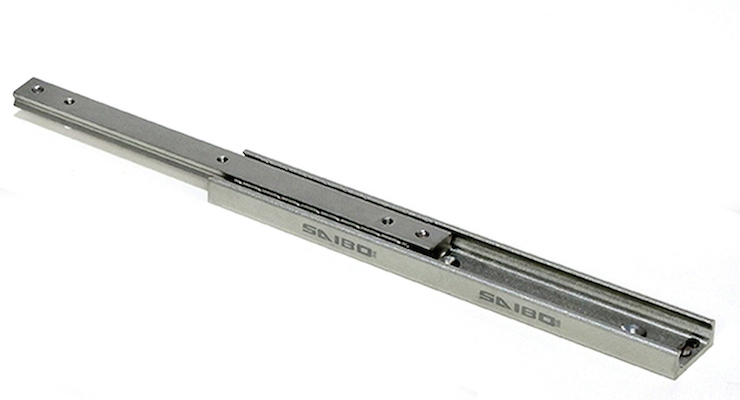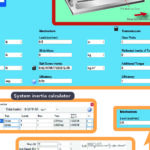As the exclusive distributor of SAIBO Linear Motion Systems in the US, LM76 is offering the SAIBO TPE28 and TPE43 series of Partial Extension Rails. These compact, precision, smooth sliding rails are assembled with a zero clearance. The TPE28 and TPE43 Partial Extension Rail series are created using a “C” shaped external rail and an internal slider. Two rows of steel ball bearings (one on the top and bottom of the slider) travel in ball cages on hardened V-shaped ways with four points of contact. These Partial Extension Rails are suited for applications requiring smooth motion such as material handling, rail systems in trains, aircraft, ships, trucks, and autonomous vehicles, wafer handling, delicate parts transfer, assembly, testing, laser machining and drilling.

The TPE28 series of Partial Extension Rails consists of 14 rails with stroke lengths from 72 mm (2.834 in.) to 601 mm (23.661 in.) and supporting loads from 1,224 N (275 lb) to 15,166 N (3,409 lb) when two rails are mounted in parallel and the load is uniformly distributed between the rails. The TPE43 series of Partial Extension Rails consists of 23 rails with stroke lengths from 123 mm (4.842 in.) to 1,013 mm (39.881 in.) and supporting loads from 3,192 N (717 lb) to 4,8460 N (10,894 lb) when two rails are mounted in parallel and the load is uniformly distributed between the rails. Stroke lengths (extension) are typically 51% of the length of the assembly.
These industry standard Partial Extension Rails are suitable for use in new and existing applications. Both the TPE28 and TPE43 Partial Extension Rails have a maximum working speed of 0.8 m/sec and have an operating temperature range of -20 °C (-4 °F) to 120 °C (248 °F). For complete information on the assembly, loads, and stroke lengths for each series and additional details consult the factory.
For more information, visit www.lm76.com.






Leave a Reply
You must be logged in to post a comment.